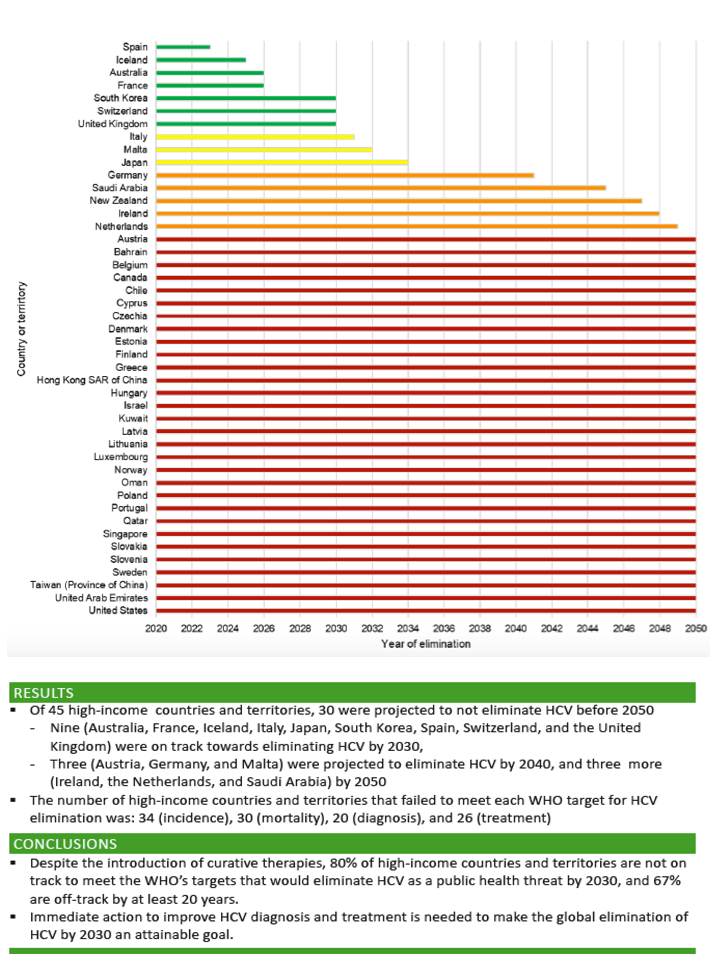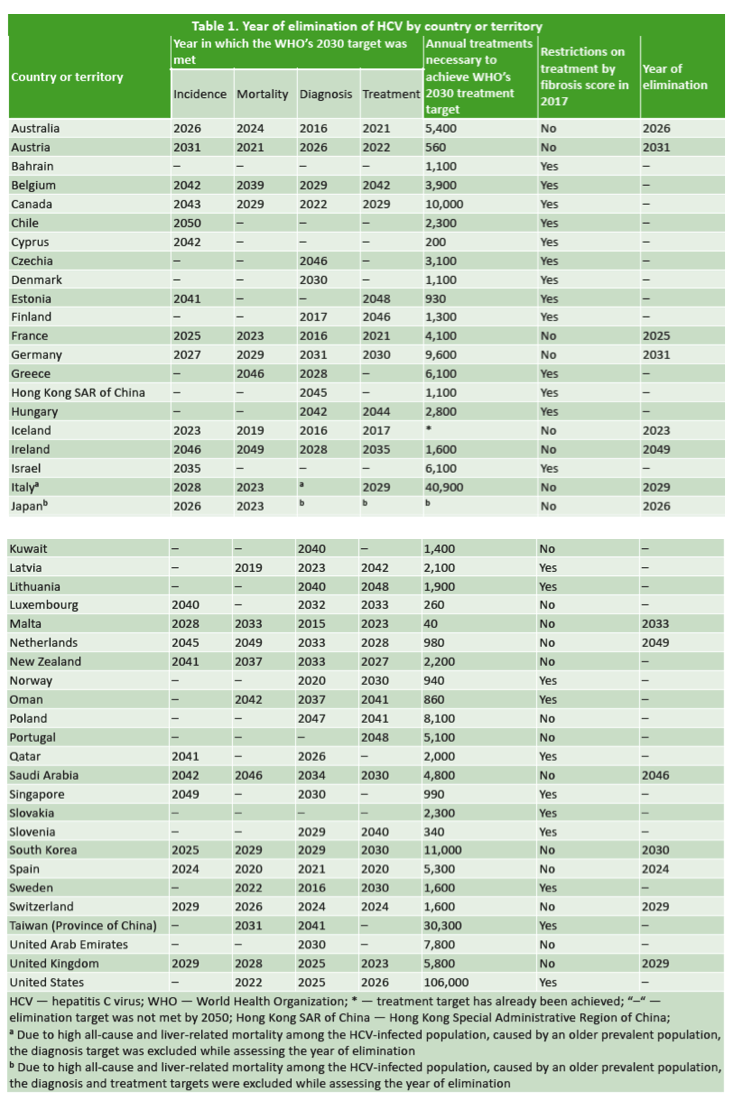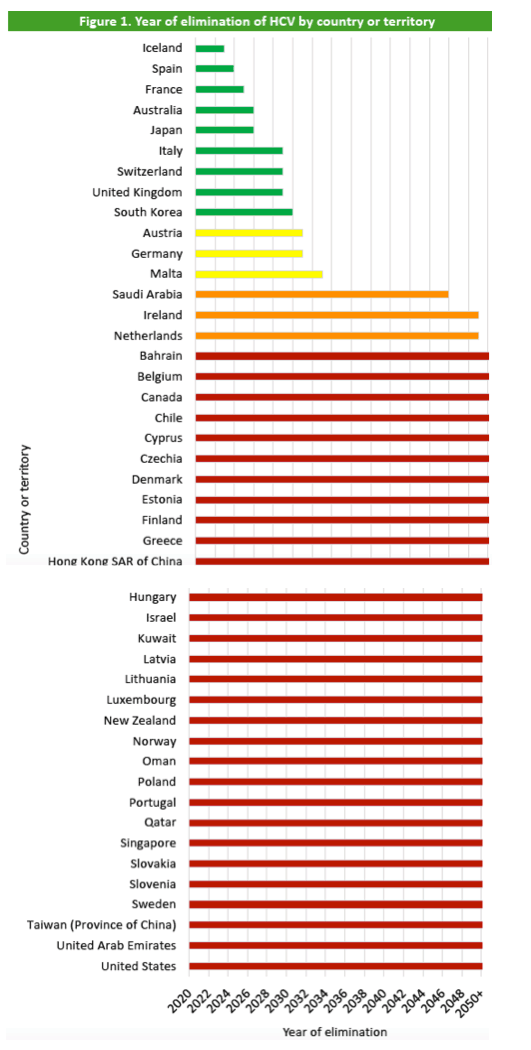 |
 |
 |
| |
HCV Elimination Off-Track WHO Targets/Countries Estimates -
Global timing of hepatitis C virus elimination: estimating the year countries will achieve the World Health Organization elimination targets
|
| |
| |
"Of 45 high-income countries and territories, 30 were projected to not eliminate HCV before 2050
-Nine (Australia, France, Iceland, Italy, Japan, South Korea, Spain, Switzerland, and the United Kingdom) were on track towards eliminating HCV by 2030,
-Three (Austria, Germany, and Malta) were projected to eliminate HCV by 2040, and three more (Ireland, the Netherlands, and Saudi Arabia) by 2050
•The number of high-income countries and territories that failed to meet each WHO target for HCV elimination was: 34 (incidence), 30 (mortality), 20 (diagnosis), and 26 (treatment)"
"Despite the introduction of curative therapies, 80% of high-income countries and territories are not on track to meet the WHO's targets that would eliminate HCV as a public health threat by 2030, and 67% are off-track by at least 20 years.
•Immediate action to improve HCV diagnosis and treatment is needed to make the global elimination of HCV by 2030 an attainable goal."
program abstract
Background and aims: The introduction of highly efficacious therapies for hepatitis C virus (HCV)
infection has made the elimination of HCV an attainable goal. This study assessed the progress made
in 45 high-income countries and territories towards meeting the 2030 HCV elimination targets by the
World Health Organization (WHO) for diagnosis, treatment, incidence, and mortality from chronic HCV
infection.
Method: A Markov model was developed to forecast the annual HCV-infected population by stage of
liver disease, sex, and age. For each country and territory, the model was populated with reported
demographic and epidemiological inputs, and historical incidence was calibrated to reported overall,
as well as sex- and age group-specific, prevalence of chronic HCV. Future incidence was assumed to
be a linear function of prevalence except when treatment restrictions were in place. With restrictions,
incidence was a linear function of the F0 prevalent population. The 2017 levels of diagnosis and
treatment were assumed constant over the future. Modelled outcomes were analysed to determine
which year countries were projected to meet the four components of the WHO HCV elimination targets
for 90% reduction in incidence, 65% reduction in liver-related deaths, 90% diagnosis and 80% of the
eligible HCV population treated. The earliest year in which all four targets were met was defined as the
year of elimination.
Results: Of 45 high-income countries and territories analysed, only seven (Australia, France, Iceland,
Spain, Switzerland, South Korea, and the United Kingdom) are on track towards meeting WHO's HCV
elimination targets by 2030. Italy, Japan, and Malta can also reach the targets with expanded
screening efforts. 30 countries are off-track by at least 20 years, as they are not projected to achieve
HCV elimination before 2050. A 90% reduction in incidence was the most difficult target to achieve,
followed by a 65% reduction in liver-related deaths (dependent of screening and treatment). Although
many countries have expanded HCV treatment, few have national screening programs that can
maintain sufficient number of patients to treat in the future.
Conclusion: Even with the introduction of curative therapies, 84% of high-income countries are not on
track to meet the WHO's 2030 targets that would eliminate HCV as a public health threat, and 66% are
off-track by at least 20 years. Immediate action to improve HCV screening and treatment is needed
globally to make WHO's HCV elimination targets attainable by 2030.
Figure: Year each country/region will meet all four World Health Organization (WHO) elimination
targets





|
| |
|
 |
 |
|
|